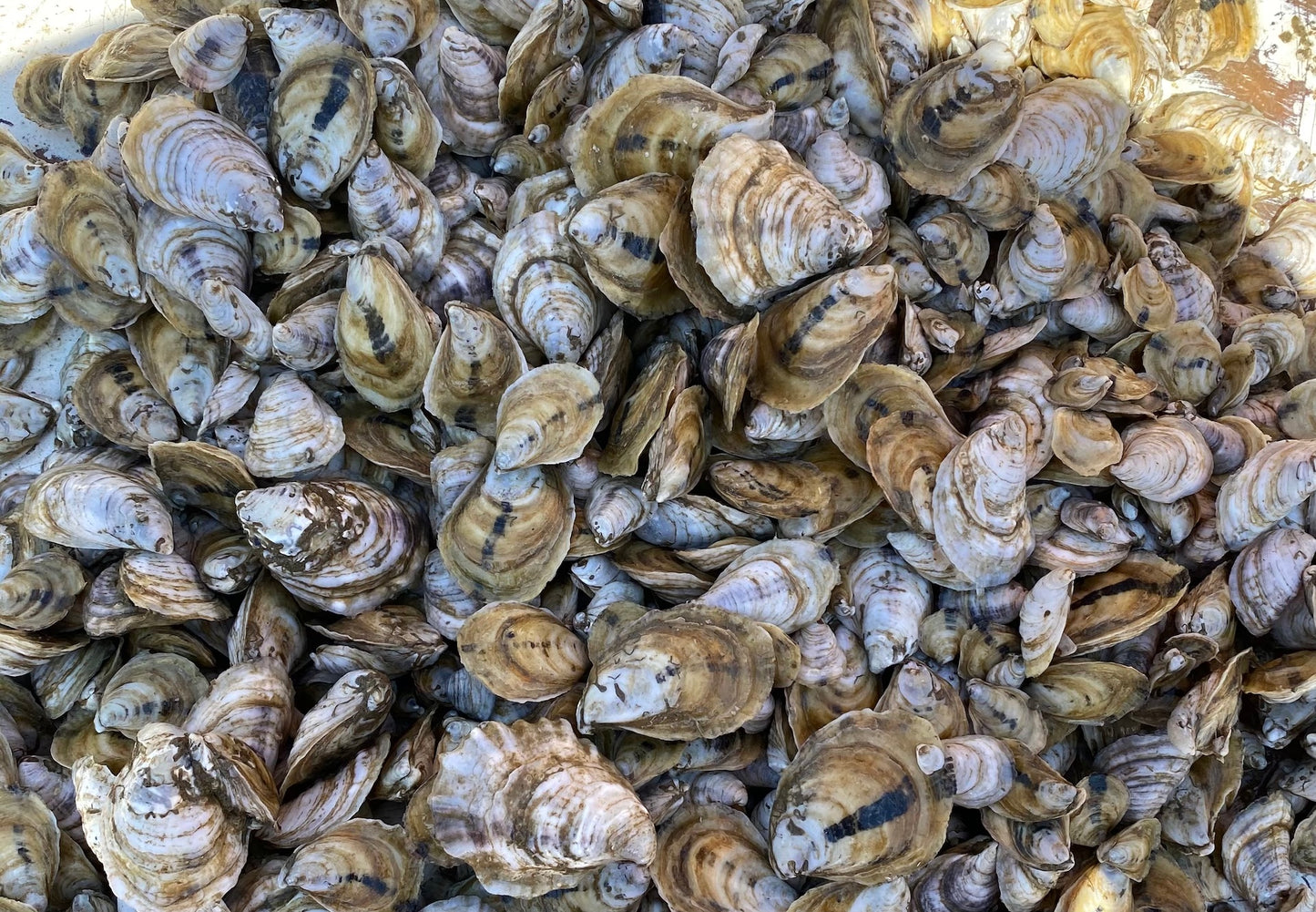
Spring is in full swing and life everywhere is blossoming–even under the water! If you follow us on social media, you may have seen Tom doing some quick videos recently on our growing operations on the farm. We thought it would be helpful to follow up with a little more in-depth look at how oysters reproduce.
Oysters are bivalve mollusks that belong to the family Ostreidae. They can be found in various marine environments, including estuaries, bays, and intertidal zones. In the wild, oysters are broadcast spawners, which means that they release their eggs and sperm into the water column, where fertilization occurs. This process is also known as external fertilization and is common among many marine organisms.
The reproductive cycle of oysters is influenced by environmental factors such as temperature, food availability, and photoperiod (the length of the day). In general, oysters spawn during the warmer months of the year when water temperatures are between 20 and 30°C. However, the timing of spawning can vary depending on the species and the location of the oysters.
Oysters are either male or female, and their sex can change depending on environmental conditions. This phenomenon is known as sequential hermaphroditism, and it is observed in many other marine organisms as well.
During the spawning season, oysters release their gametes (eggs and sperm) into the water column. The timing of spawning is critical, as it ensures that there are enough nutrients in the water for the larvae to feed on and grow. The release of gametes usually occurs during a specific phase of the lunar cycle, which is influenced by the tides.
Oysters can release millions of eggs and sperm into the water column during a single spawning event. The eggs are small and buoyant, allowing them to drift with the currents, while the sperm are motile and swim toward the eggs. Fertilization occurs when a sperm reaches an egg, and the resulting zygote begins to divide and develop into a larva.
The larval stage of oysters is known as a veliger, and it lasts for several weeks. During this stage, the larvae are planktonic, which means that they drift with the currents and feed on small planktonic organisms. The larvae also have a shell that helps protect them from predators and the elements.
After several weeks, the larvae undergo metamorphosis, where they settle onto a suitable substrate and attach themselves with a byssus thread. The byssus thread is a strong, elastic fiber that is secreted by the foot of the oyster. It allows the oyster to attach itself to a surface and withstand the strong currents in the water.
Once the oysters have attached themselves to a substrate, they begin to grow and develop into juveniles. Juvenile oysters are known as spat, and they resemble miniature versions of adult oysters. The spat will continue to grow and mature, eventually reaching maturity and becoming sexually mature adults.
On our farm, oysters are left to grow and feed in our topwater cages. The rolling cages help them grow strong by forcing them to work harder to stay attached to the cage, which results in a very meaty and satisfying oyster. This combined with the fact that our oysters feed on the top of the water column is largely responsible for their unique flavor profile. Don’t forget, because our oysters are farmed, there is no designated breeding season or ‘best’ season to consume them. We’re constantly producing new oysters so that you can order year-round.
For more tips and tricks, check out our blog. Or, shop now.
← Older post Newer post →
